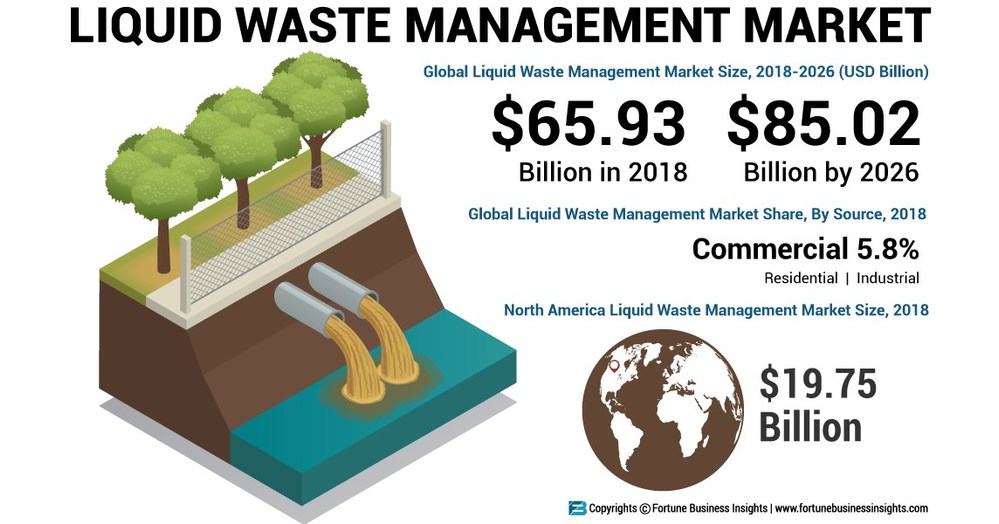Some Known Questions About Reclaim Waste.
Wiki Article
The Of Reclaim Waste
Table of ContentsThe Buzz on Reclaim WasteGetting My Reclaim Waste To WorkReclaim Waste Fundamentals ExplainedSome Known Details About Reclaim Waste About Reclaim Waste
Residential sewage waste refers to the waste and items from a domestic septic storage tank. The proper administration and disposal of residential sewage waste need fluid waste to be transferred to a sewage therapy plant where the proper techniques and tools are applied to cleanse and dispose of waste.
Business waste typically includes prospective hazards, such as combustible products or a mixture of fluid and solid waste products, and calls for an extra sophisticated and detailed disposal procedure. The disposal of commercial waste normally entails the filtration of waste prior to transportation to guarantee risk-free and correct disposal. Hazardous waste is developed from byproducts and runoff of commercial processes and production.
This kind of waste can not utilize the exact same sewage administration transport or procedures as septic or business fluids. The hazardous waste management process requires the evaluation and testing of liquid waste before it undergoes the disposal procedure (liquid waste removal). Overflow waste is the liquid waste that comes from runoff and excess stormwater in highly populated locations or cities
Drainage waste can cause contamination and flooding if not taken care of effectively. Making certain correct waste management can protect against catastrophes and lower environmental harm.
Our Reclaim Waste Ideas
Call PROS Solutions today to find out about our waste monitoring and disposal solutions and the appropriate methods to care for the liquid waste you produce.(https://www.metal-archives.com/users/reclaimwaste1)This so-called 'wastewater' is not only a vital resource but, after treatment, will certainly be released to our land, rivers or the sea. Used water from bathrooms, showers, baths, kitchen area sinks, laundries and commercial procedures is understood as wastewater.

water used to cool down machinery or tidy plant and devices). Stormwater, a form of wastewater, is overflow that streams from farming and urban locations such as roofs, parks, gardens, roadways, paths and seamless gutters into stormwater drains pipes, after rain. Stormwater moves untreated directly to local creeks or rivers, ultimately reaching the sea.
All about Reclaim Waste
In Queensland, the majority of wastewater is dealt with at sewer therapy plants. Wastewater is transported from residential or industrial websites with a system of sewers and pump terminals, called sewage reticulation, to a sewer treatment plant. Neighborhood federal governments build, keep and run most sewer treatment plants. Operators are certified under the Environmental Management Act 1994 to discharge cured wastewater at an appropriate ecological standard into waterways.The Division of Natural Resources encourages local federal governments about handling, operating and keeping sewerage systems and therapy plants. In unsewered areas, city governments may call for owners to install specific or house sewer treatment systems to treat domestic wastewater from bathrooms, cooking areas, restrooms and washings. The Division of Natural Resources authorises using family systems when they are confirmed to be efficient.
In some brand-new communities, treatment of some stormwater to get rid of trash, sand and crushed rock has started using gross contaminant catches. Wastewater treatment happens in four stages: Gets rid of solid matter.
Makes use of tiny living organisms understands as micro-organisms to damage down and get rid of remaining dissolved wastes and fine particles. Micro-organisms and wastes are integrated in the sludge.
Getting My Reclaim Waste To Work
Nutrient elimination is not readily available at all sewage treatment plants since it needs expensive specialised tools. Clear fluid effluent created after treatment might still consist of disease-causing micro-organisms - liquid waste disposal.
A lot of wastewater flows right into the sewage system. Under the Act, local governments carry out authorizations and permits for ecologically relevant tasks (Periods) involving wastewater releases that may have a local impact.
useful content
The Definitive Guide to Reclaim Waste
Tracking supplies factual information about water high quality and can validate that permit conditions are being satisfied. The information gotten through tracking supplies the basis for making water quality choices.Report this wiki page